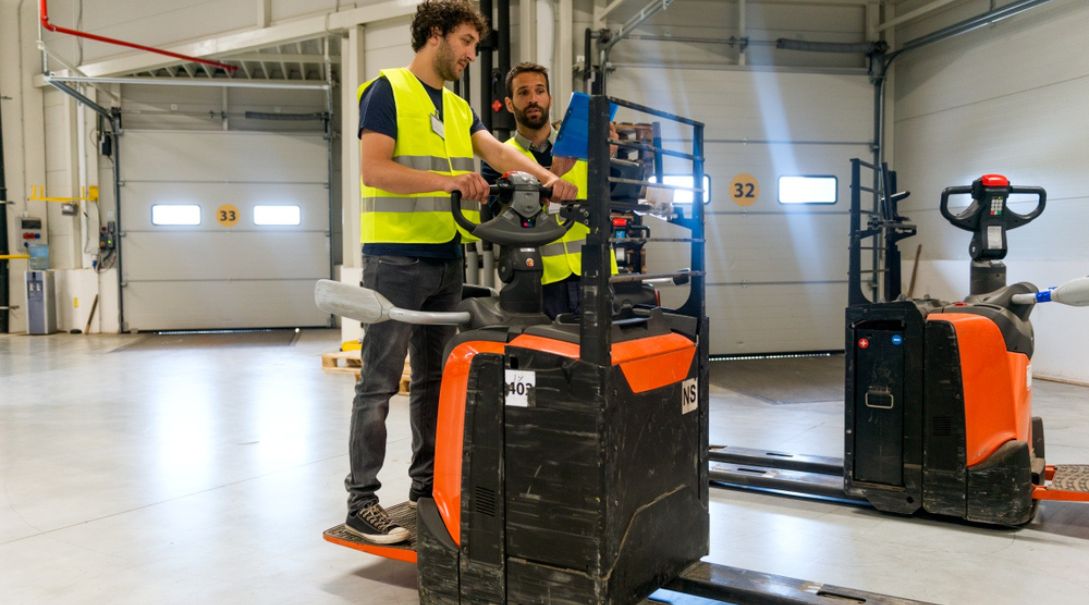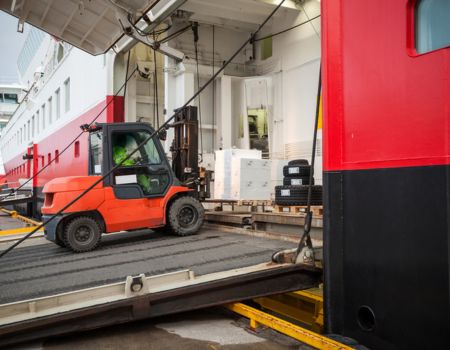Forklift safety is critical in warehouses, distribution centers, and construction sites where these machines are essential for daily operations. Yet, forklifts remain one of the leading causes of workplace injuries. Each year, forklift-related incidents lead to serious harm, fatalities, and costly consequences for businesses—many of which could be prevented with proper training and adherence to safety standards.
At Alpha-Omega Training and Compliance, Inc. (AOTC), we deliver practical guidance and hands-on training that helps your team stay safe, reduce risks, and master fork truck safety.
Table of Contents
About Forklift Safety Requirements
Forklift operations are governed by strict safety standards covering everything from operator training to equipment checks and load handling.
Key Forklift Safety Rules
Operator Training and Instruction
- Only individuals with proper training should operate forklifts.
- Instruction should include theory, practice, and supervised operation.
Daily Equipment Checks
- Forklifts should be inspected before each shift.
- Common checks include brakes, steering, horn, forks, mast, and tires.
Load Handling
- Stay within the rated load limits of the forklift.
- Never allow anyone to stand or walk under raised loads.
Fall Zone Awareness
- The fall zone is the area where a load might fall during lifting or moving.
- Always keep clear of this zone—generally twice the height of the load.
- Only necessary personnel should guide or assist with lifting operations.
Safe Operating Practices
- Maintain visibility and travel at safe speeds.
- Be extra cautious when operating on ramps, slopes, or uneven surfaces.
What Is the Fall Zone for a Forklift Operation?
The fall zone refers to the area beneath and around a raised load where materials could fall. This zone presents a serious risk to anyone nearby. Proper awareness and control of this space are critical to preventing accidents.
Best Practices for Fall Zone Safety
- Always stay a safe distance from the forklift during lifting.
- Never walk or stand beneath raised loads.
- Use trained spotters when necessary.
- Remember, the fall zone extends sideways, not just directly under the load.
How to Use a Forklift in a Warehouse Safely
Operating a forklift in a warehouse setting requires more than just driving skills — it demands attention to the environment, traffic, and load safety.
Warehouse Forklift Best Practices
Plan Ahead
- Keep aisles clear and ensure there is enough room for maneuvering.
- Monitor pedestrian traffic and shared spaces.
Load Handling
- Keep loads centered and tilt the mast backward for stability.
- Lower forks when moving to avoid tripping hazards.
Communication and Awareness
- Sound horns at intersections and blind corners.
- Make eye contact with pedestrians before proceeding.
Speed Control
- Always drive at a controlled speed, especially in confined areas.
- Avoid sudden turns, stops, or accelerations.
How to Drive a Forklift on a Ramp
Ramps add a layer of complexity to forklift operation. The slope affects load stability and driving control.
Safe Ramp Driving Practices
Going Uphill
- Drive forward with the load facing uphill.
- Use a low gear and keep a steady, slow speed.
Going Downhill
- Drive in reverse with the load facing uphill.
- Apply brakes gently and avoid sharp movements.
When Unloaded
- Follow the same safe practices.
- Never attempt to turn while on a ramp.
What Are the Main Causes of Injuries When Using Forklifts?
Understanding the root causes of forklift accidents is the first step toward prevention.
- Lack of Training: Inexperience and overconfidence can lead to mistakes.
- Excessive Speed: Speeding reduces control and increases tipping risks.
- Neglected Maintenance: Equipment failures often stem from poor upkeep.
- Overloading: Exceeding the forklift’s capacity can cause tipping and loss of control.
- Improper Handling of Loads: Loads that are unbalanced, unsecured, or poorly positioned.
- Weak Supervision and Poor Safety Culture: A lack of oversight and emphasis on safety can lead to ongoing risks.
What to Expect from AOTC’s Forklift Safety Training Program
AOTC provides comprehensive forklift safety training designed to address real-world challenges in the workplace. Our courses cover a full range of operational skills and safety practices.
Training topics include:
- Forklift safety rules and operational guidelines
- Hands-on forklift handling techniques
- Identifying and maintaining a safe fall zone
- Safe ramp driving procedures
- Best practices for warehouse operations
- Emergency preparedness and response
AOTC training equips workers with the skills and knowledge they need to perform their jobs safely and responsibly.
Strengthen Your Workplace Safety Program with AOTC’s Forklift Safety Training . We help businesses across Florida and nearby states create safer work environments with hands-on forklift safety training tailored to their unique needs.

